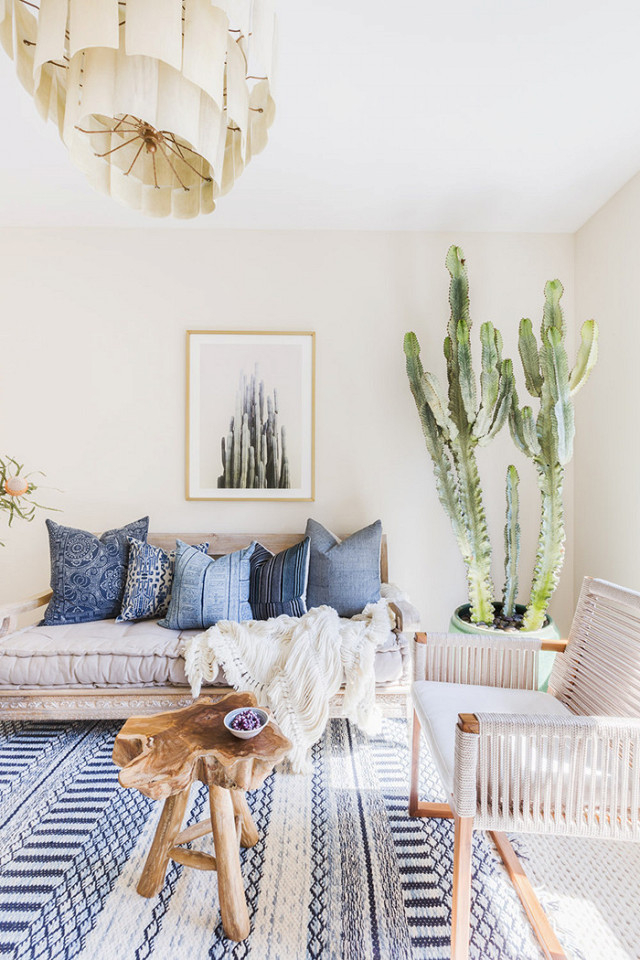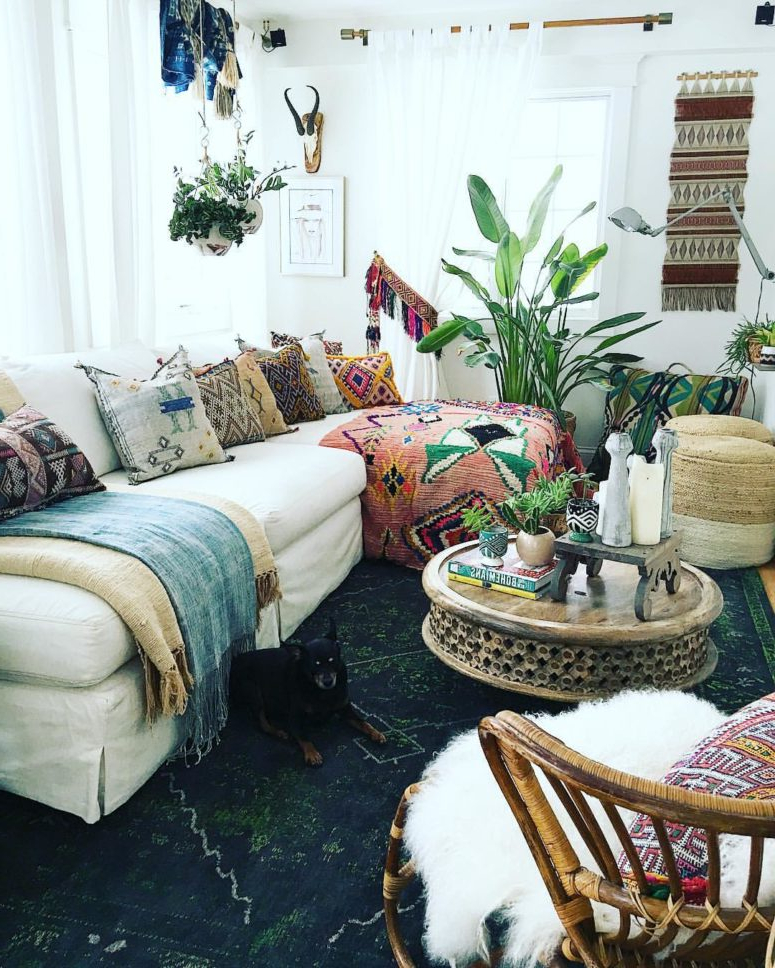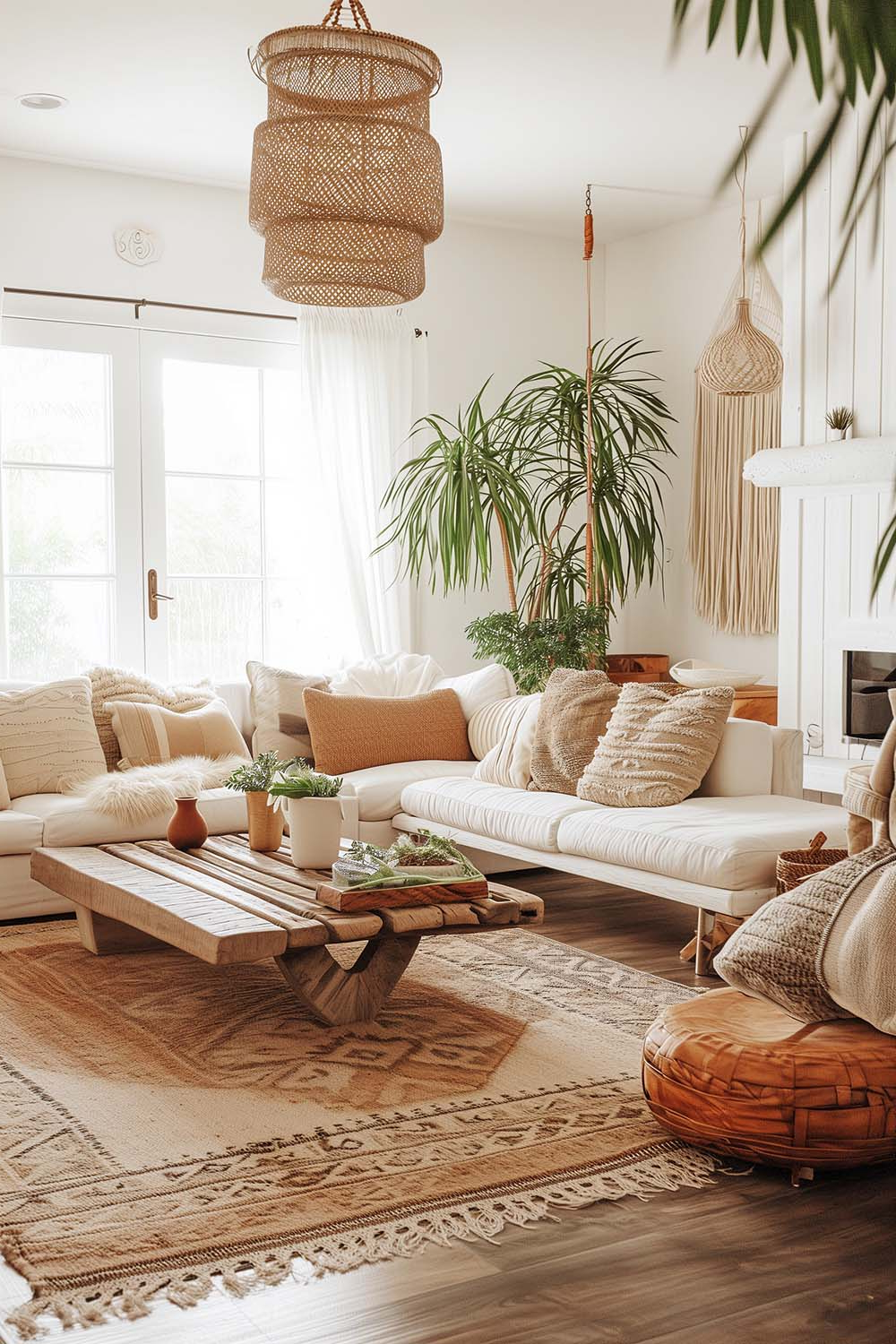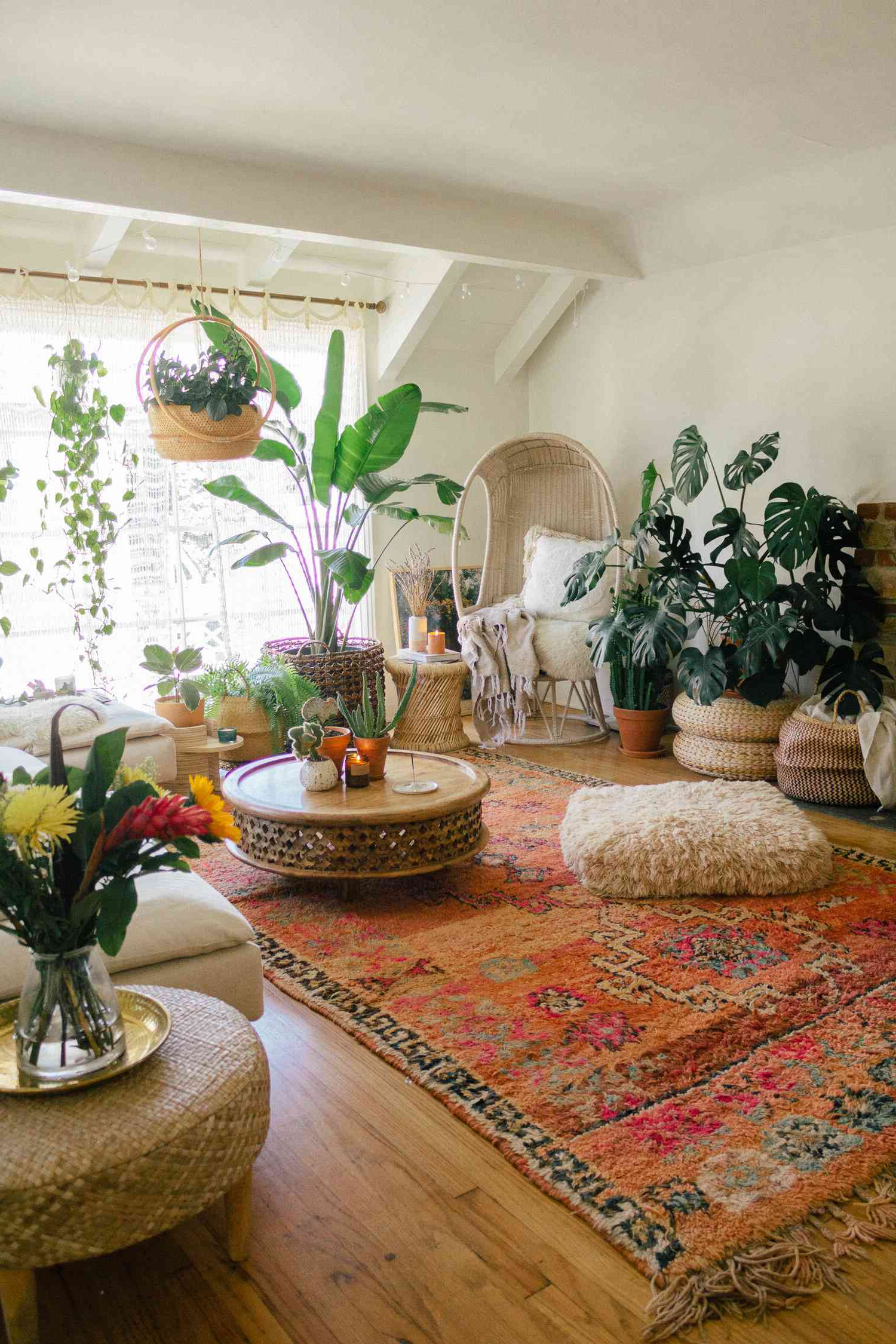Imagine stepping into a space that feels like a warm hug from your favorite aunt – cozy, colorful, and full of character. That’s exactly what a well-designed boho living room offers. It’s not just about throwing together some rugs and plants; it’s an art form that combines comfort, creativity, and personal expression. Whether you’re starting from scratch or looking to refresh your current space, understanding the core elements will help you create something truly special.
The bohemian style, often called ‘boho,’ has captured hearts around the world for its ability to blend comfort with artistic flair. This aesthetic celebrates individuality, mixing various textures, colors, and global influences into one harmonious space. But what makes a boho living room truly shine? It’s not just about having lots of things – it’s about creating a sense of warmth, freedom, and storytelling through design choices. The magic happens when every element works together to create a feeling of being at home, yet somewhere exotic and inspiring. Let’s explore the must-have components that transform a regular living room into a stylish boho sanctuary.
Color Palette: The Foundation of Boho Vibes
Colors tell stories in boho design, and choosing the right palette sets the tone for everything else. Think earth tones – deep browns, warm terracotta, rich ochres, and muted oranges. These grounding colors provide the perfect backdrop for bolder accents. You might see deep forest greens, vibrant turquoise, or sunset pinks popping up in textiles, artwork, or decorative pieces. The beauty lies in layering different hues to create depth and visual interest. Don’t be afraid to mix warm and cool tones – it adds complexity and keeps the space from feeling flat. A neutral base allows for experimentation with brights while maintaining balance. Consider using a color wheel to help guide your selections; it’s surprising how much harmony you can find in unexpected combinations. For instance, pairing burnt sienna with sage green creates a sophisticated yet relaxed atmosphere that feels both grounded and energizing.
Textiles and Layered Textures
This is where boho really comes alive. Textiles are the heart and soul of the style. Think thick, handwoven throws draped over furniture, fringed pillows with intricate patterns, and soft area rugs that invite barefoot walking. The key is variety – mix textures like velvet, linen, cotton, and wool. A chunky knit blanket next to a silky pillow creates contrast that feels luxurious rather than chaotic. Rugs play a particularly important role; they define spaces, add warmth, and bring visual weight to a room. Look for those with geometric patterns or tribal designs. Don’t overlook the power of curtains – heavy, flowing fabrics in rich colors can transform a window into a focal point. The goal isn’t to overwhelm, but to create layers that feel lived-in and loved. Every texture tells a story about comfort and personality.
Natural Materials and Organic Elements
Boho design thrives on natural materials that connect us to the earth and our surroundings. Wood is everywhere – from coffee tables with exposed grain to picture frames and decorative bowls. Plants are non-negotiable in any good boho space. They bring life, color, and fresh energy to the room. Don’t just throw a few pots around; create a plant wall or arrange them in varying heights and sizes. Cacti, fiddle leaf figs, hanging pothos, and succulents all work beautifully. Other natural elements include stone, rattan, jute, and woven baskets. These materials add authenticity and create a sense of calm that’s hard to achieve with synthetic alternatives. The idea isn’t to go completely rustic, but to incorporate organic elements that feel intentional and purposeful. Each material should enhance the overall aesthetic rather than distract from it.
Global Influences and Cultural Artifacts
One of the most exciting aspects of boho design is its celebration of global cultures and traditions. This means incorporating pieces that have traveled from faraway places or represent different artistic expressions. Think handwoven textiles from Morocco, carved wooden sculptures from Bali, or colorful ceramics from Mexico. These items don’t need to be expensive to make an impact – sometimes the most meaningful pieces come from local markets or family heirlooms. Look for items with cultural significance that resonate with you personally. They could be vintage tapestries, traditional textiles, or handmade crafts. The key is to choose pieces that feel authentic rather than touristy. When done right, these artifacts create conversation starters and give the space a unique identity that reflects your interests and travels.
Mixing Patterns and Prints
Pattern mixing is where boho design really gets exciting. It’s not about clashing everything together – it’s about creating harmony through repetition and variation. Start with one dominant pattern and build around it with smaller-scale prints. For example, if you have a bold geometric rug, complement it with solid-colored furniture and accent pillows with subtle floral or abstract designs. Keep a consistent color scheme across all patterns to maintain cohesion. Don’t be afraid to repeat motifs – a certain print or color can tie different areas of the room together. Borders, stripes, florals, geometrics, and tribal designs all have their place. The secret is to know when to stop – too many competing patterns can overwhelm the senses. Think of each pattern as a note in a symphony, working together to create a beautiful whole.
Lighting That Sets the Mood
Good lighting is crucial in any room, but especially in boho spaces where atmosphere matters. Natural light should be maximized whenever possible, but artificial lighting needs to support the cozy, intimate feel. String lights, whether fairy lights or lantern-style, add warmth and whimsy. Floor lamps with interesting shapes or fabrics can become statement pieces. Table lamps with textured shades or vintage finishes bring character to side tables. Consider layering different types of lighting – ambient for general illumination, task lighting for reading, and accent lighting for highlighting artwork or architectural features. Dimmer switches allow you to adjust the mood throughout the day. Soft, warm bulbs create a more inviting environment than harsh, bright ones. The goal is to make the space feel comfortable enough to spend hours in, whether you’re reading, relaxing, or entertaining guests.
Creating a stylish boho living room isn’t about following rigid rules – it’s about embracing creativity and expressing yourself through design. Each element we’ve discussed contributes to a larger story that’s uniquely yours. From the carefully chosen color palette to the thoughtfully selected textiles, every decision should reflect your personality and lifestyle. Remember that boho isn’t about perfection; it’s about creating a space that feels lived-in, loved, and authentically you. The best boho rooms aren’t those that look like they came from a magazine – they’re the ones that make you want to stay and linger. So take inspiration from these essentials, trust your instincts, and don’t be afraid to experiment. After all, the most beautiful boho spaces are those that evolve naturally over time, filled with memories and meaning.















